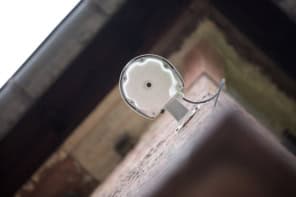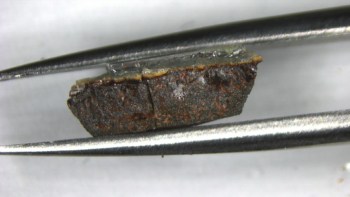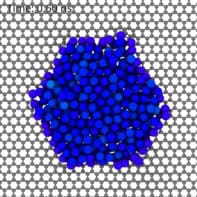A new technique that uses magnetic fields to detect underwater objects has been unveiled by physicists in the UK. The fields induce electric currents in metallic objects and the resulting magnetic echo is detected by an array of atomic magnetometers.
Detecting objects in water using electromagnetic radiation is extremely difficult because light and other radiation attenuates rapidly as it passes through water. This is not the case with sound, which is why sonar is “unrivalled in deep water” for detecting objects, according to Luca Marmugi of University College London (UCL). In shallower depths, however, the echo from the seabed can blind sonar to an object.
An alternative to sonar is magnetic detection, which can discriminate magnetic objects from non-magnetic ones. Existing schemes, says Marmugi, are passive – simply looking for any magnetic fields created by an object. “There is an obvious [military] countermeasure,” explains Marmugi. “All the steelwork composing the hull of a ship or submarine can be demagnetized and you can design engines to limit or if possible cancel all the magnetic signature.”
Secondary fields
One way forward is magnetic induction tomography, which was originally developed for industrial monitoring. This uses an oscillating “primary” magnetic field to induce electric currents in target objects that, in turn, produce “secondary” magnetic fields. By detecting these secondary fields one can, in principle, characterize any object that is an electrical conductor – as long as the object, sensors and primary source sufficiently close to one another.
“There are no countermeasures, unless you want to build a submarine completely out of something like plastic, which I don’t think is feasible,” says Marmugi.
In practice, however, deploying magnetic induction tomography in water involves overcoming severe technical hurdles, says Marmugi. Classical coil sensors are not sensitive enough to measure very weak secondary fields, so unfeasibly strong primary fields would be required.
Now, Marmugi and colleagues at UCL have created an array of four radio-frequency atomic magnetometers that can be placed under or over a container of water (see video). These magnetometers work by measuring the precession of atomic spins in a room-temperature vapour, with the precise nature of the precession being very sensitive to the presence of external magnetic fields.
Precession triggering
The primary field triggers the precession of spins in the magnetometers. If no secondary fields are excited in response to this primary field, the spins in all four magnetometers precess with the same amplitude and phase. However, any magnetic fields induced in a target will affect the precession in different magnetometers in different ways. Therefore, by monitoring the amplitude and phase in the four sensors, the researchers could detect the presence of a conductive object in the water and also determine the object’s position relative to each sensor.
The researchers demonstrated 100% success in detecting, and 91% success in locating, an aluminium plate in a beaker of salt water placed 120 mm beneath their sensor array. Salt water poses additional challenges because of its higher conductivity than fresh water.
At the 10 kHz primary-field frequency used, the wavelength of the primary signal is much longer than the range of the signal (the penetration distance). This near-field configuration had several advantages: little energy was projected deeper into the water, greatly reducing both the power consumption and the echo from deeper objects. Furthermore, the secondary field strength gives a clear indication of an object’s depth.
The researchers are now working towards testing the measurement protocol in open water. “You can achieve [near-field] penetration distances of kilometres in water if you drop the oscillation frequency to a few hundreds or tens of Hertz,” explains Marmugi. Such a system could potentially be battery powered, he says.
Better than a metal detector?
Atomic physicist Michael Romalis of Princeton University in the US, whose group has developed some of the most sensitive magnetometers ever produced, describes the research as “a fine demonstration” although he notes that the sensitivities reported are well below the best achieved with traditional coil detectors. “An old-fashioned metal detector works by just using an inductive coil for pickup. My question is ‘Is it really better than an old-fashioned metal detector?’ and it’s not obvious to me that it would be.”

Atomic magnetometer is most sensitive yet
Arne Wickenbrock of the University of Mainz is more optimistic: “Vapour cell magnetometers are hugely sensitive over a huge frequency range over which you cannot really build very sensitive coils,” he says, “You can also tune the frequency very easily over a broad range, which is very difficult for coils…There’s a considerable literature on eddy current detection with vapour cells but this is, I believe, the first time anybody’s used an array and detected something under water.”
The system is described in Applied Optics.



